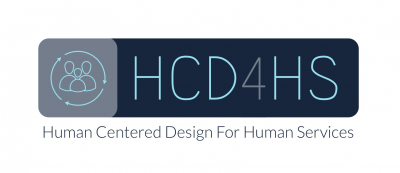Introduction
Human services programs, such as those funded through the U.S. Department of Health and Human Services’ Administration for Children and Families (ACF), address complex social issues ranging from supporting healthy relationships, child welfare, and economic mobility to providing high-quality, accessible early childhood programs. However, the human services sector may experience challenges to efficient and effective service provision due to funding constraints, leadership or staffing challenges, operating under multiple competing demands, and changing regulatory requirements (The Kresge Foundation, 2015; Oliver Wyman & SeaChange Capital Partners, 2018). These types of challenges, often referred to as “wicked” problems, are particularly complex because they can be defined in multiple ways by different people and are particularly hard to solve (Rittel & Webber, 1973; Roberts, 2000). Approaches that spark innovation are needed to address these “wicked” problems faced by human services programs.
Human-Centered Design (HCD) is a problem-solving and design approach that emphasizes designing for and with those who will ultimately utilize the solution (i.e., the end user). HCD emerged from the technology sector, where it was first used for rapid product development (Norman & Draper, 1986). Because of its inherent focus on customers, recipients of services, or anyone who is designated as the end user, HCD appears to have potential for promoting effective, efficient, and compassionate service delivery aligned with the mission of ACF (ACF, n.d.). Despite this appeal, the implementation of HCD within human services is relatively novel (Bazzano et al., 2017; McLaughlin et al., 2019), and there has been little empirical work to date on how HCD might be used to improve outcomes of interest to ACF programs. Given the structural complexity of human services organizations funded by ACF and the complexity of social issues they address, it is unclear how well HCD may translate to this context, or the extent to which the approach may be both feasible and effective.
Human-Centered Design (HCD) Is Both a Process and a Mindset
One of the challenges in defining HCD is the existence of multiple terms that are used interchangeably in the literature and the field (Altman et al., 2018; Bazzano et al., 2017; Code for America, 2017; DC Design, 2017; Lake, 2016; Liedtka & Salzman, n.d.; Vechakul et al., 2015). This may be related to different terms for similar design approaches having been generated by different firms and academic centers. For example, IDEO popularized the terms human-centered design and design thinking (Design Kit, n.d.a; IDEO Design Thinking, n.d.), while the Hasso Plattner Institute of Design at Stanford also popularized the term design thinking (Doorley et al., 2018), and the Nielsen Norman group popularized the term user experience design (Norman & Nielsen, n.d.). Here we define HCD, describe its key principles, and explore the different ways HCD has been conceptualized (i.e., as a process and as a mindset) in order to facilitate understanding of terminology that continues to evolve with the field.
HCD is a design process and mindset that centers the end user to address complex problems in an innovative way.
From a research perspective, it is difficult to study HCD and draw conclusions across studies without a common definition of HCD that can be applied across contexts. For the purpose of this project, we present a definition below, drawn from a review and synthesis of the literature: Human-centered design is a process and a mindset for addressing complex problems by designing solutions with those who will ultimately utilize the solution (i.e., end users). HCD is guided by key principles that promote empathy for end users and the generation of new and creative solutions by “[taking] into account behaviors, ways of thinking, needs, and aspirations” (U.S. Office of Personnel Management, n.d.). A design team comprised of individuals from multiple perspectives engages both end users and stakeholders (such as partners, community organizations, staff from other departments, etc.) throughout an iterative process that tests proposed solutions and refines them based on feedback. Ideally, the intensive involvement of end users and stakeholders will help ensure solutions are both easily adopted and effective.

